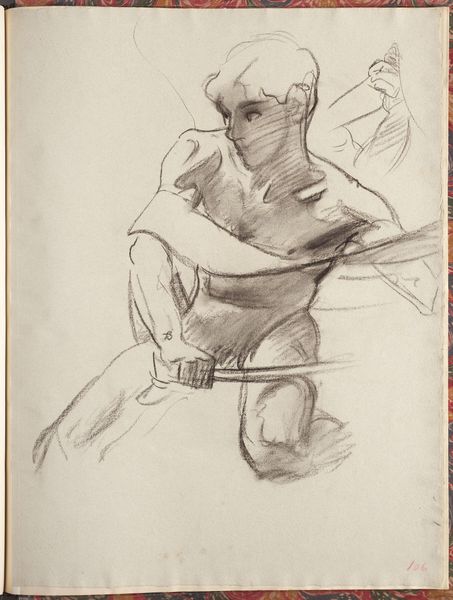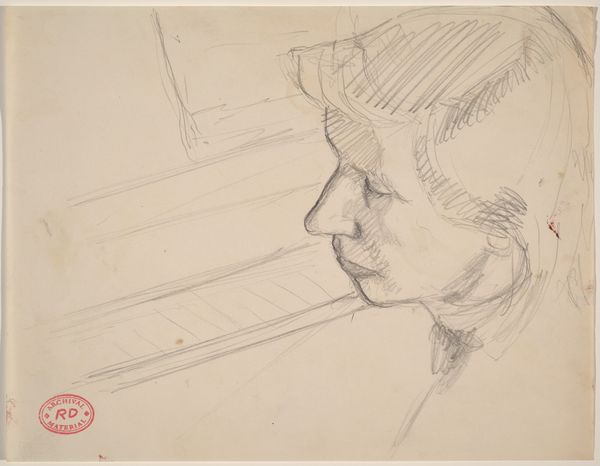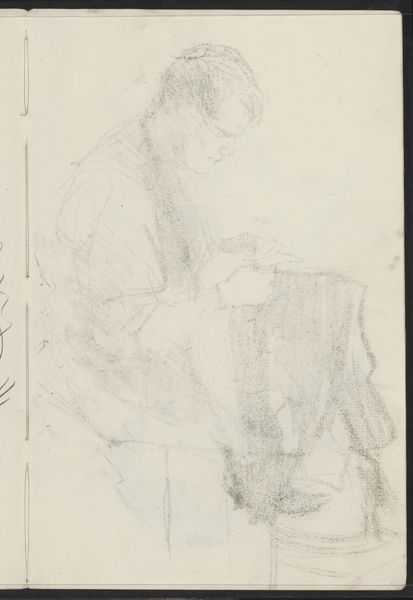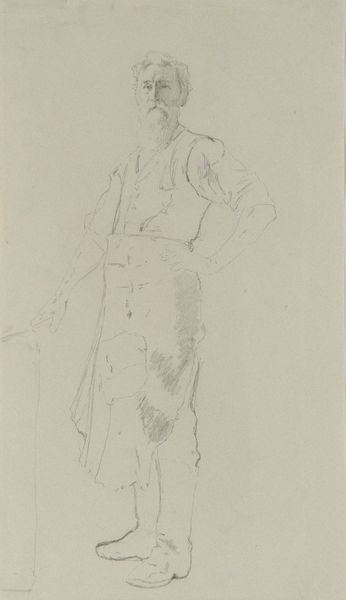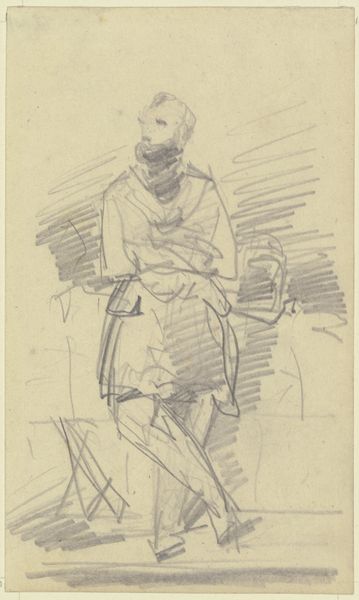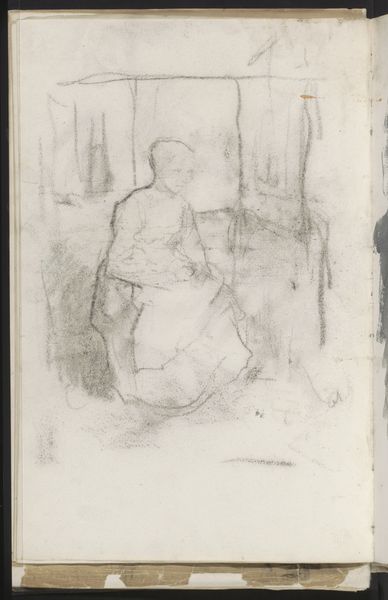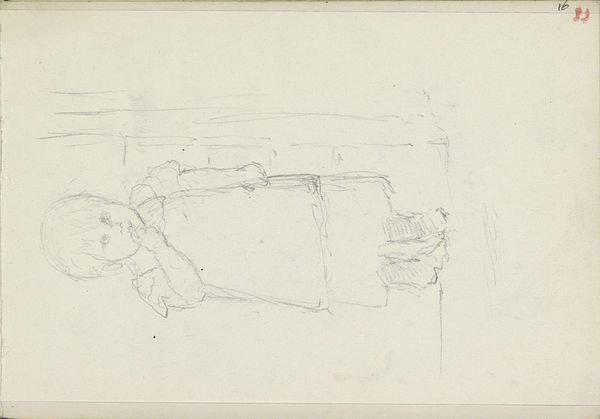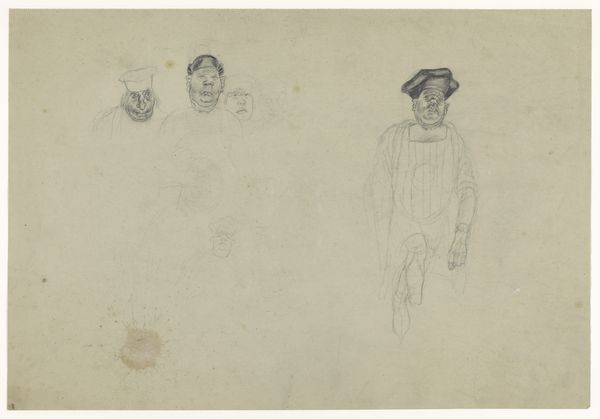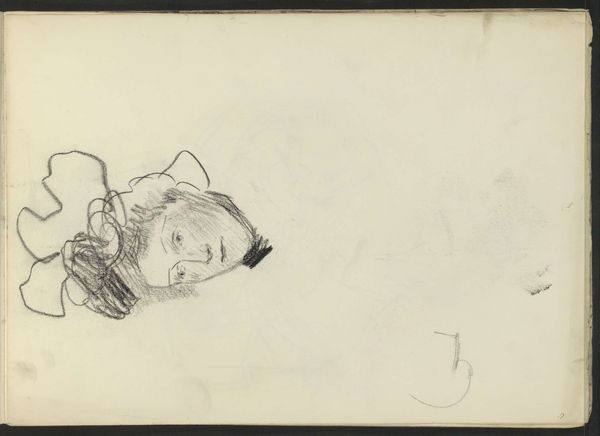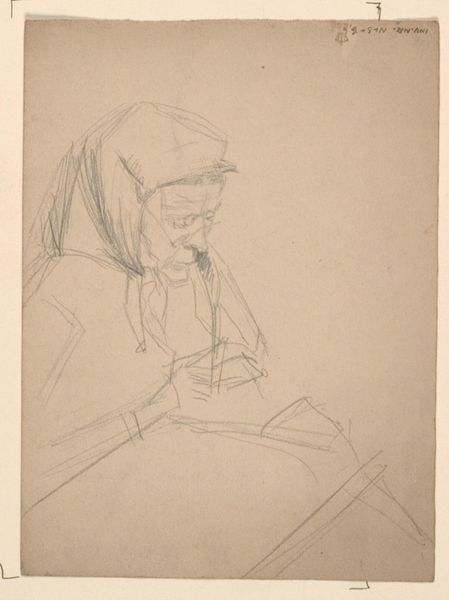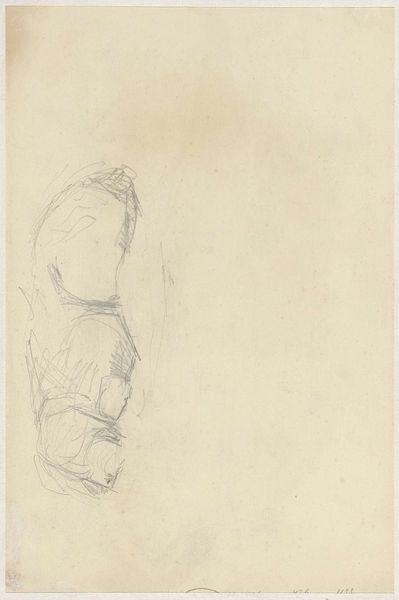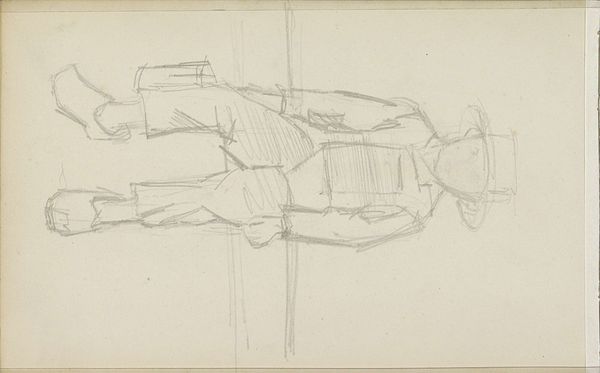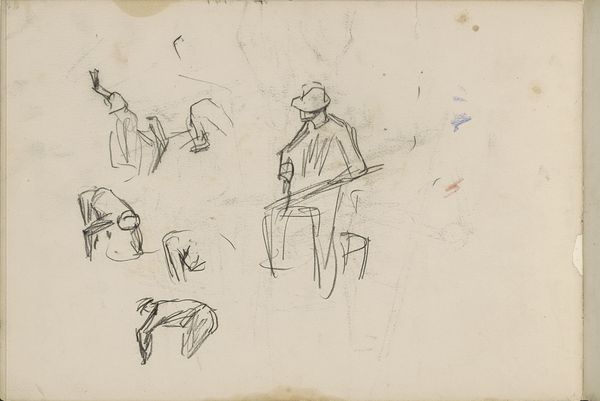
drawing, pencil
#
portrait
#
drawing
#
figuration
#
pencil
#
academic-art
Dimensions: 240 mm (height) x 312 mm (width) (bladmaal)
Editor: So, here we have "Kvindefigur," a pencil drawing by Peter Hansen, dating somewhere between 1868 and 1928. The delicate lines give it a somewhat ephemeral quality. What strikes you most about it? Curator: For me, the interest lies in considering this drawing not merely as a preparatory sketch but as a record of labor. Look closely at the paper: its texture, its wear. These reveal the material conditions of artistic production at the time. The "drawing" is a record of material use: the pencil on paper, the labor to record form... what more can you see from its creation? Editor: I hadn’t thought of the paper itself as speaking so directly. I guess I was focused on the figure. Is it fair to see the lack of finish as significant? Curator: Precisely. The unfinished nature can be interpreted as a deliberate engagement with the process of artistic creation itself. Was it intended to remain unfinished? How does that alter its meaning? Was the social station of the worker an influence of the material at use? Editor: That’s interesting, because I usually think of "finish" as a sign of higher artistic value. This almost challenges that. Curator: Exactly! This work challenges traditional hierarchies of art and craft by highlighting the often-overlooked labor and materiality involved in artistic production. Consider the implications: How does acknowledging this labour impact our understanding of art history and the artist's role in society? Editor: This definitely makes me see sketches – and really, all art – in a completely different light, considering their production. Curator: Yes, and it encourages us to appreciate not just the image, but the very real effort and tangible elements behind its creation.
Comments
No comments
Be the first to comment and join the conversation on the ultimate creative platform.
